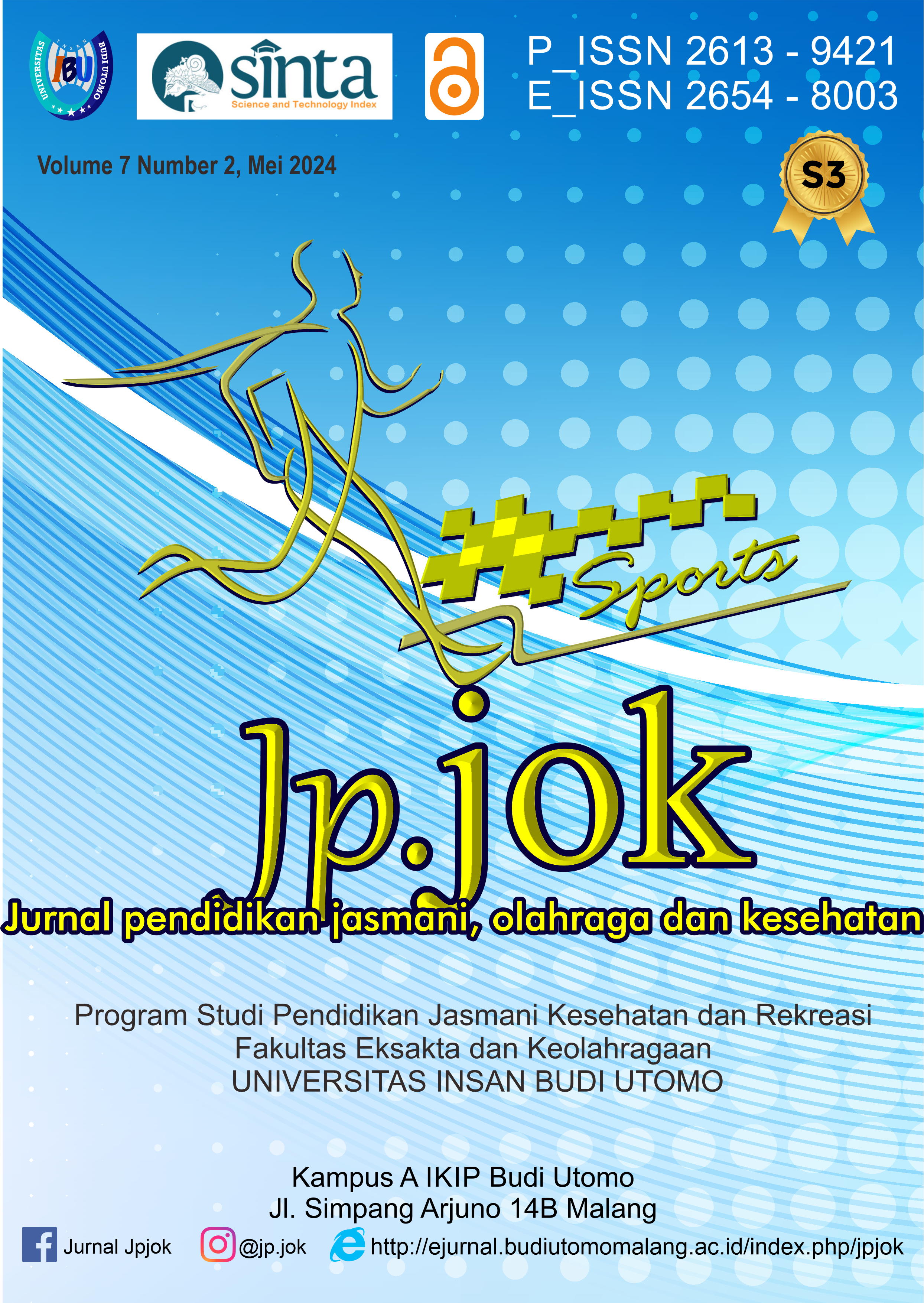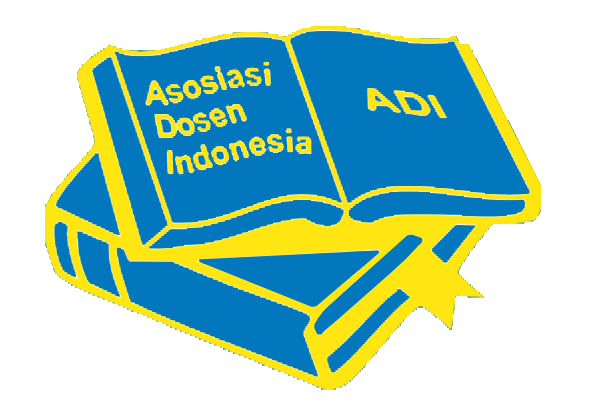Exploration Study on Media Exposure and Maintenance of the 22nd Tour de Borobudur Sports Tour Activities 2022
Abstract
In the holding of the 22nd Tour de Borobudur 2022, media exposure is considered to be one of the most important aspects of the event's success. Media exposure covers the sports tourism sector to attract audiences and encourage people to get to know and join the event. The main objective of this research is to find out how much media exposure there is at the 2022 Tour de Borobudur and what media gives the biggest exposure to the event. This research uses a research design that is exploration research with methods of retrieval of archive research data. The results of this study show that electronic media has 15 views and online media has 42 views. Exposure to the 2022 Tour de Borobudur event in the post-event period has the highest intensity of exposure, with a total of 35 online announcements. Online media, in the form of online news, is the primary source of exhibition for the 2022 Tour de Borobudur events compared to electronic media. So, online news has more potential than electronic media news and becomes the most recommended in the media display of the event due to the number of views given.
References
Cheung, K. S. (2017). Proper Augmented Marked Graphs : Properties, Characterizations and Applications. Information Technology And Control, 46(1). https://doi.org/10.5755/j01.itc.46.1.13970
de Vreese, C. H., & Neijens, P. (2016). Measuring Media Exposure in a Changing Communications Environment. Communication Methods and Measures, 10(2–3), 69–80. https://doi.org/10.1080/19312458.2016.1150441
Eime, R. M., Harvey, J. T., Charity, M. J., & Payne, W. R. (2016). Population levels of sport participation: implications for sport policy. BMC Public Health, 16(1), 752. https://doi.org/10.1186/s12889-016-3463-5
GOZALOVA, M., SHCHIKANOV, A., VERNIGOR, A., & BAGDASARIAN, V. (2014). SPORTS TOURISM. Pol. J. Sport Tourism, 92–96.
Higham, J., & Hinch, T. (2018). Sport Tourism Development. Channel View Publications. https://doi.org/10.21832/HIGHAM6553
Holliman, R. (2010). Online media and the sciences. In In: Priest, Susanna ed. Encyclopaedia of Science and Technology Communication. SAGE. http://www.uk.sagepub.com/refbooksProdDesc.nav?prodId=Book230802
Islam, M. R. (2023). Online News Media: A Comparative Cross Cultural Analysis. Mass Communication and Journalism Department Jagannath University. https://doi.org/10.13140/RG.2.2.35256.62728
Kennelly, M., Moyle, B., & Lamont, M. (2015). Service recovery and leisure events: implications from the cancellation of Ironman ® New Zealand 2012. Annals of Leisure Research, 18(1), 48–64. https://doi.org/10.1080/11745398.2014.941374
Kiani, M. S., & Rizvandi, A. (2020). Investigating the impact of the media on international sporting events and the extent of tourist attraction at that event. Journal of Humanities Insights, 045–051.
Kramp, L. (2015). The rumbling years. The communicative figurations approach as a heuristic concept to study– and shape–the transformation of journalism. In Journalism, Representation and the Public Sphere. (lumière Bremen 2015, pp. 23–55).
Kumar, N., & Singh, J. P. (2013). Effect of board size and promoter ownership on firm value: some empirical findings from India. Corporate Governance: The International Journal of Business in Society, 13(1), 88–98. https://doi.org/10.1108/14720701311302431
Lee, J., Kim, K., Park, G., & Cha, N. (2021). The role of online news and social media in preventive action in times of infodemic from a social capital perspective: The case of the COVID-19 pandemic in South Korea. Telematics and Informatics, 64. https://doi.org/10.1016/j.tele.2021.101691
Maher, C. A., Lewis, L. K., Ferrar, K., Marshall, S., De Bourdeaudhuij, I., & Vandelanotte, C. (2014). Are Health Behavior Change Interventions That Use Online Social Networks Effective? A Systematic Review. Journal of Medical Internet Research, 16(2), e40. https://doi.org/10.2196/jmir.2952
Marani, I. N., Rhewindinar, Widyaningsih, H., Yulianti, E., Subarkah, A., & Jauhari, M. (2022). Effects of Mass Media in Sports. https://doi.org/10.2991/ahsr.k.220203.014
Marwick, A. E. (2018). Why do people share fake news? A sociotechnical model of media effects. Georgetown Law Technical Review, 2, 474–512.
Morgan, A., Wilk, V., Sibson, R., & Willson, G. (2021). Sport event and destination co-branding: Analysis of social media sentiment in an international, professional sport event crisis. Tourism Management Perspectives, 39, 100848. https://doi.org/10.1016/j.tmp.2021.100848
Nwabuwe, S. N., Akarah, U. M., & O, E. (2022). Mass Media Coverage of Sports Events Impact and Sports Development in Delta State. Journal of Art, Humanity, and Social Studies, 2(3).
Pitana, I. G., & Diarta, I. K. S. (2009). Pengantar ilmu pariwisata (1st ed.). Andi.
Purcell, K., Rainie, L., Mitchell, A., Rosenstiel, T., & Olmstead, K. (2010). Understanding the Participatory News Consumer: How Internet and Cell Phone Users Have Turned News into a Social Experience. Pew Research Center, 1–63. chrome-extension://efaidnbmnnnibpcajpcglclefindmkaj/https://www.pewresearch.org/wp-content/uploads/sites/8/legacy/Participatory_News_Consumer.pdf
Rahmiyati. (2017). Rahmiyati. Jurnal UIN, 66–70.
Rezaei Soufi, M., Khodaparast, S., & Eisazadeh, S. (2021). The Role of Media Advertising in the Development of Sports Tourism in Guilan Province of Iran. Annals of Applied Sport Science, 9(2), 0–0. https://doi.org/10.52547/aassjournal.839
Sahrun, N. (2019). Analisis Dan Perancangan Sistem Informasi Manajemen Berita Hasil Liputan Wartawan. (JurTI) Jurnal Teknologi Informasi, 3, 160–168. chrome-extension://efaidnbmnnnibpcajpcglclefindmkaj/https://core.ac.uk/download/pdf/287325348.pdf
SCHARPF, A., GLÄßEL, C., & EDWARDS, P. (2023). International Sports Events and Repression in Autocracies: Evidence from the 1978 FIFA World Cup. American Political Science Review, 117(3), 909–926. https://doi.org/10.1017/S0003055422000958
Slater, M. D. (2004). Operationalizing and Analyzing Exposure: The Foundation of Media Effects Research. Journalism & Mass Communication Quarterly, 81(1), 168–183. https://doi.org/10.1177/107769900408100112
Steele, J. (2022, June 15). Reuters Institute Digital News Report 2022, Indonesia. Digital News Report 2022. https://reutersinstitute.politics.ox.ac.uk/digital-news-report/2022/indonesia
Usman KS. (2010). Ekonomi Media: Pengantar Konsep dan Aplikasi. Ghalia Indonesia.
Vandelanotte, C., Spathonis, K. M., Eakin, E. G., & Owen, N. (2007). Website-Delivered Physical Activity Interventions. American Journal of Preventive Medicine, 33(1), 54–64. https://doi.org/10.1016/j.amepre.2007.02.041
Wilding, D., Fray, P., Molitorisz, S., & McKewon, E. (2018). The Impact of Digital Platforms on News and Journalistic Content.
Copyright (c) 2024 Jp.jok (Jurnal Pendidikan Jasmani, Olahraga dan Kesehatan)

This work is licensed under a Creative Commons Attribution-ShareAlike 4.0 International License.
Authors retain copyright and grant the journal right of first publication with the work simultaneously licensed under a Creative Commons Attribution 4.0 International License that allows others to share the work with an acknowledgement of the work's authorship and initial publication in this journal.





.png)






